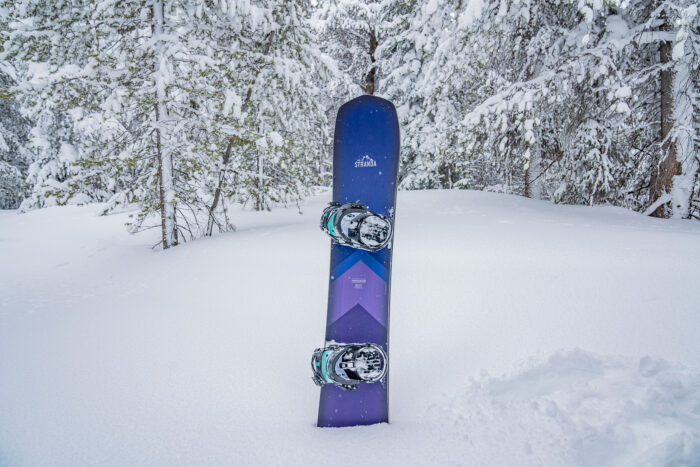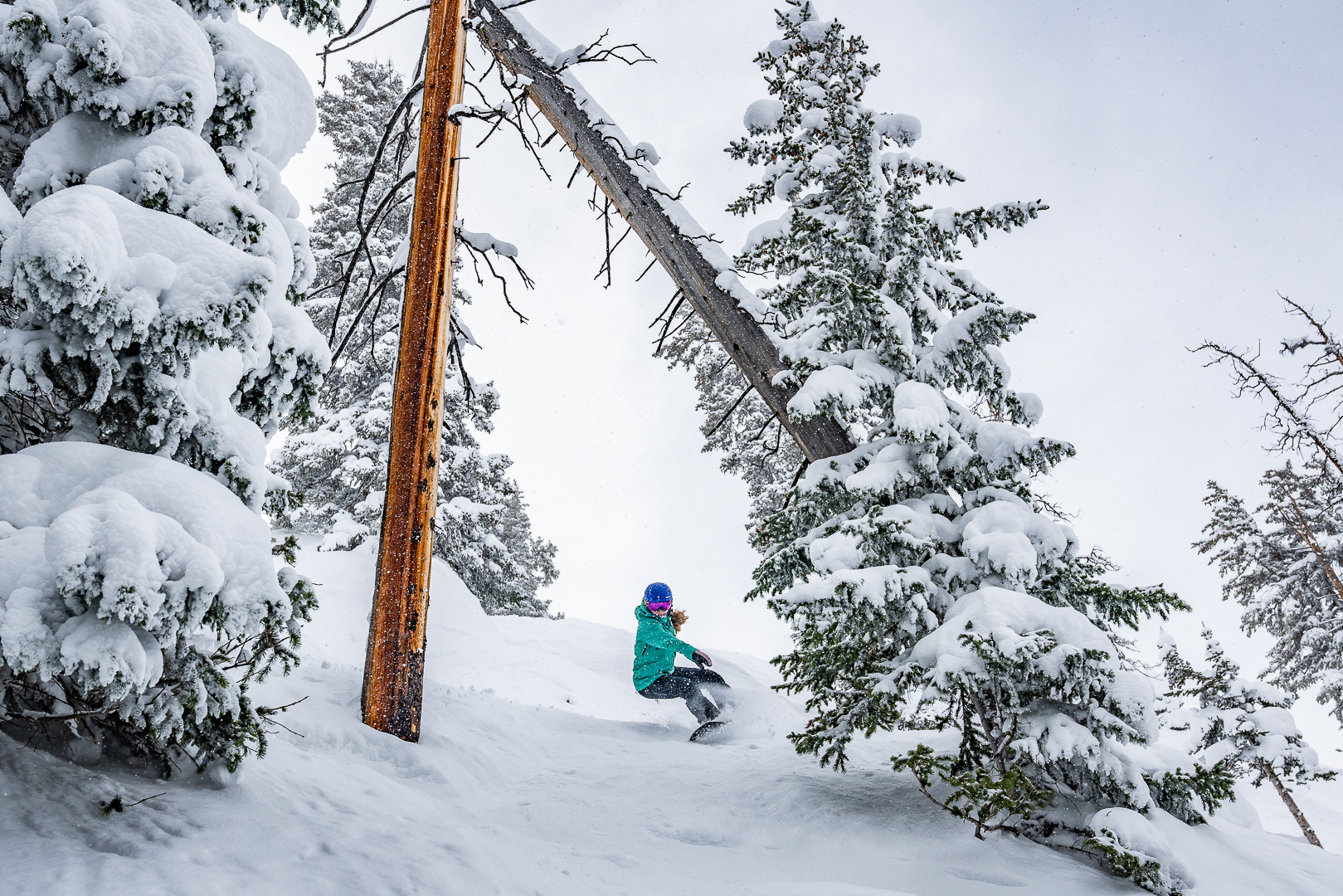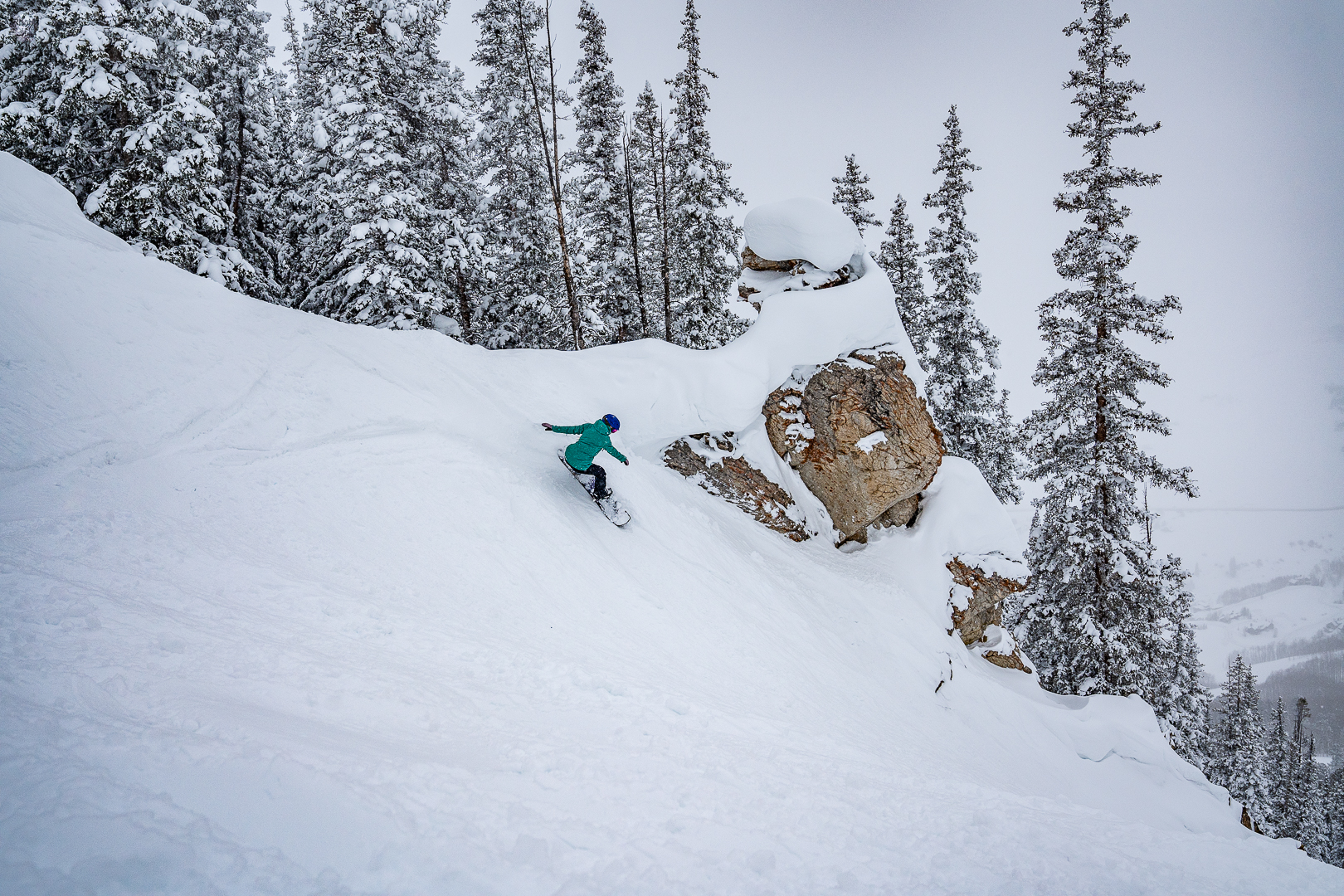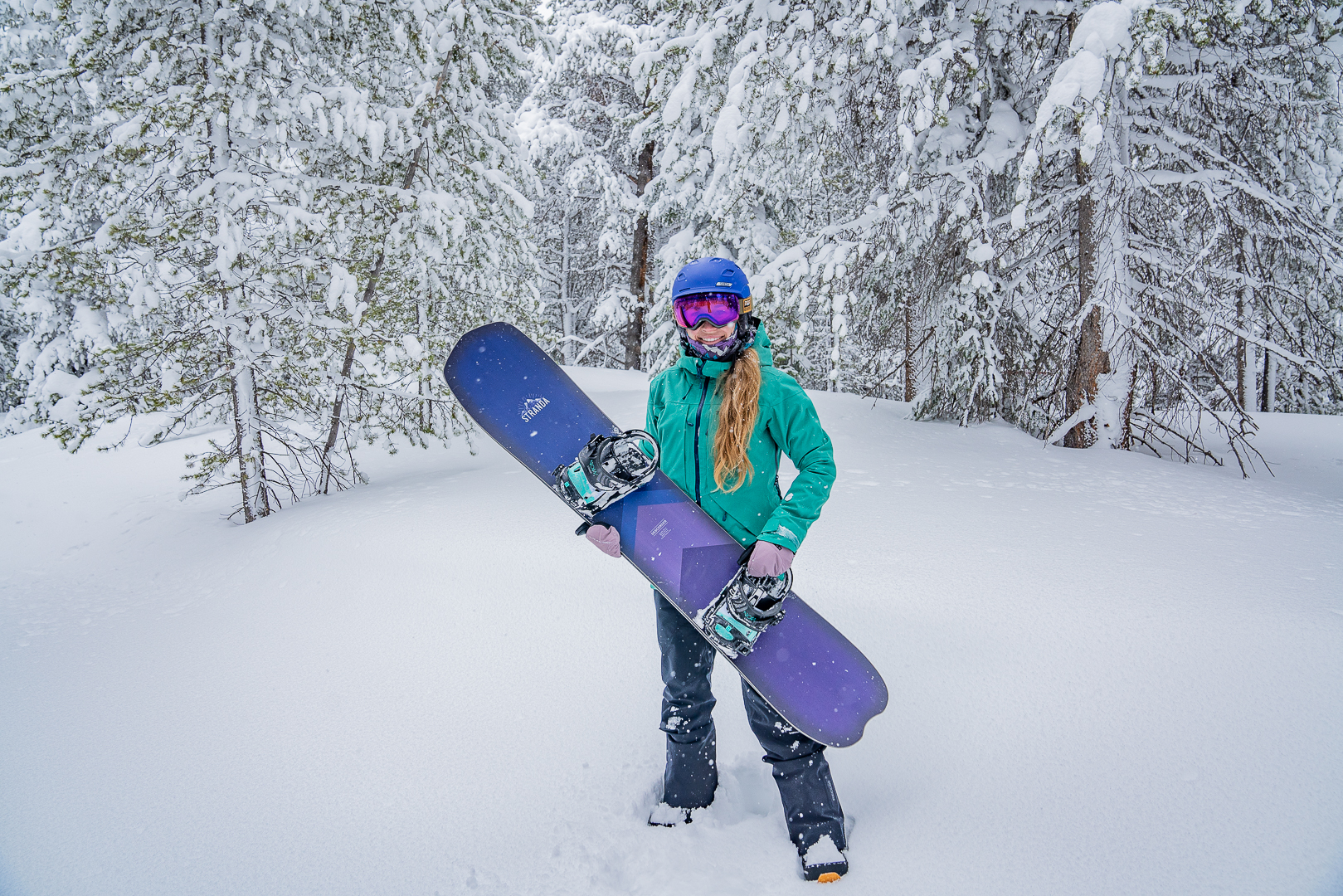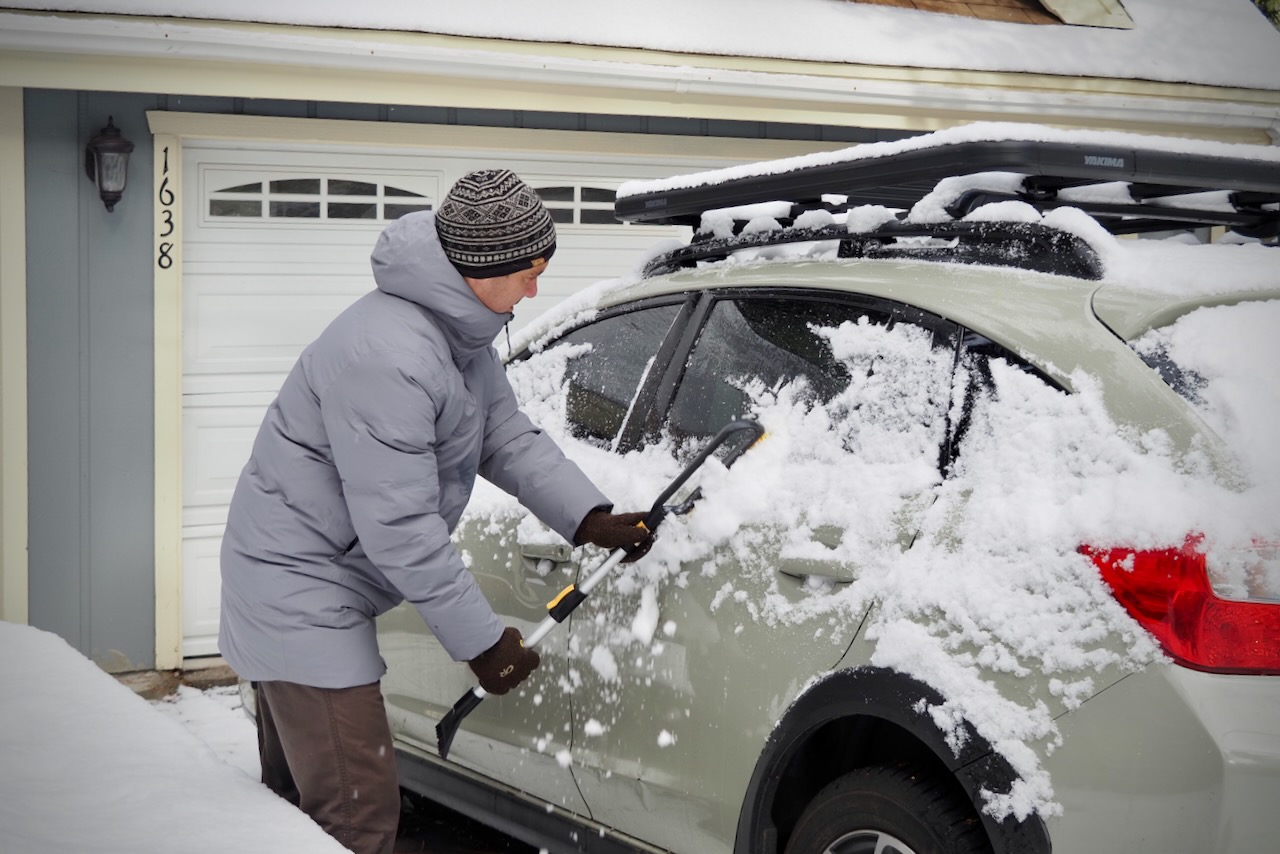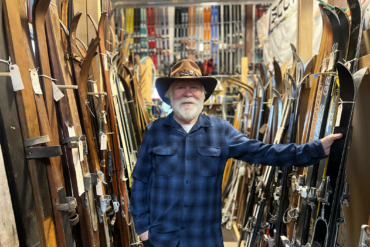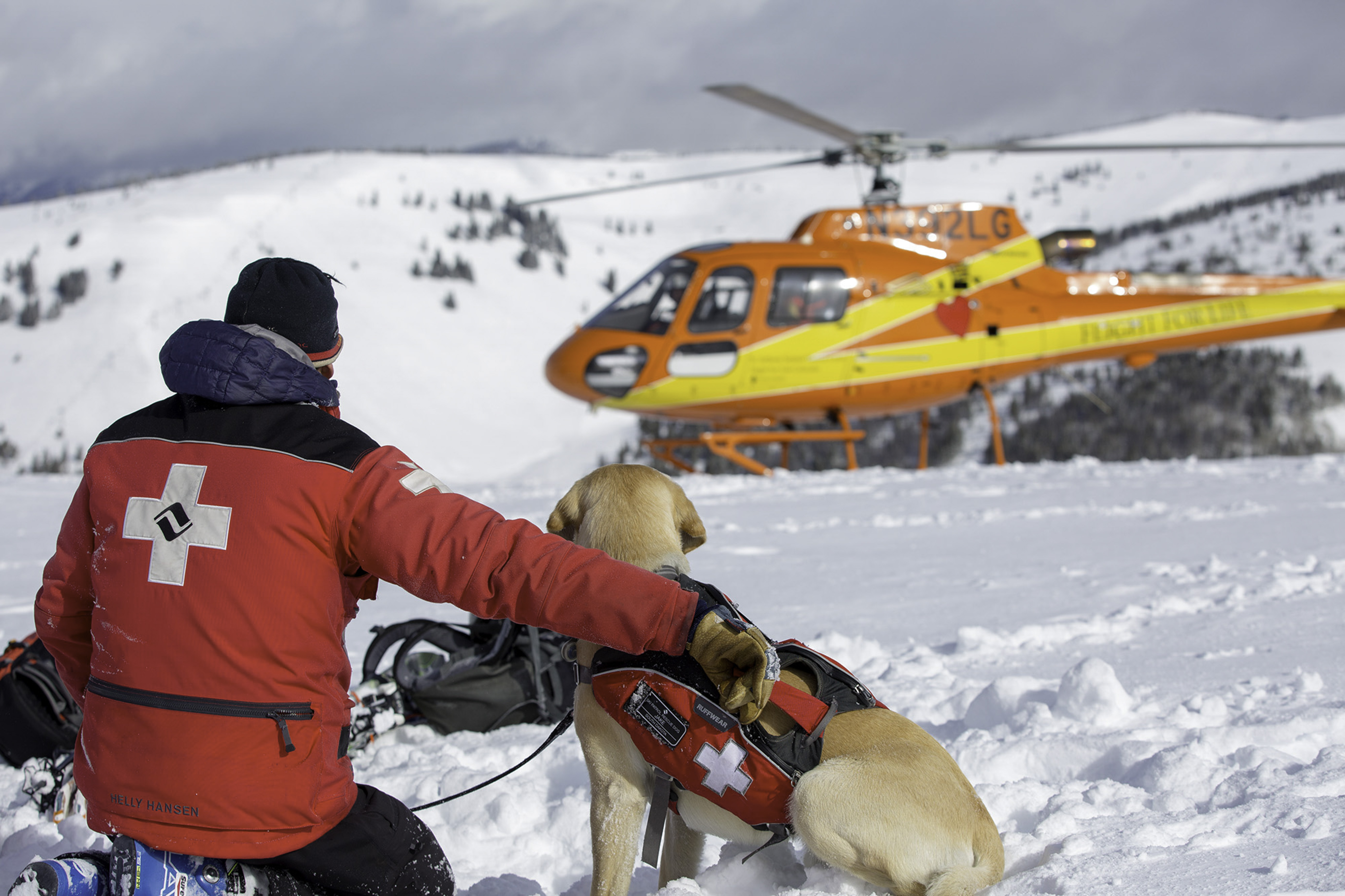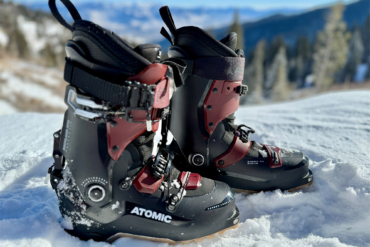Hard pack, ice, groomers, chopped pow, tight trees, deep snow — she does it all with smoothness, play and bite.
Stranda Snowboards founder Mats Drougge started blueprinting surfy snowboards 2 decades ago, inspired by the ocean surf-emulated expression that was surfacing circa 1990, when he met surf legends Mike Doyle and Joe Cabell in Aspen, Colo. The goal is to flow like water, which is visually reflected in the shifted volume and shapes of Stranda’s boards that officially hit the market in 2015.
Born and raised in Gothenburg, Sweden, Drougge specializes in the creation of directional snowboards and splitboards rather than freestyle or twins. The test lab for these designs is the Scandinavian Mountains, where you can drop high alpine lines that end at the Norwegian Sea and experience deep snow as well as rotten ice. After hearing through the grapevine of how sturdy these boards are built, I was excited to finally give ’em a go.
In short: The Women’s Descender Snowboard ($679) is a freeride all-mountain board that’s confidence-building for charging down steep, quad-shaking lines, landings, and traverses, yet easy to rip through tight terrain or powder and reactive for slingshotting air.
-
Shape
7.9
-
Flex
9.0
-
Profile
9.0
-
Core and Construction
9.0
- Profile: Parabolic camber (4mm) with slight rocker in the tip and tail
- Shape: Directional
- Flex: 7 (moderately stiff)
- Base: Sintered 4001 Durasurf
- Sizes (cm): 152, 148
Pros
- Traverses with a champion grip
- Easy to steer through tight terrain
- Stout yet poppy for variable or deep snow
Cons
- Directional shape doesn’t excel at riding switch
- Huge sweeping turns aren’t as fun with this shape
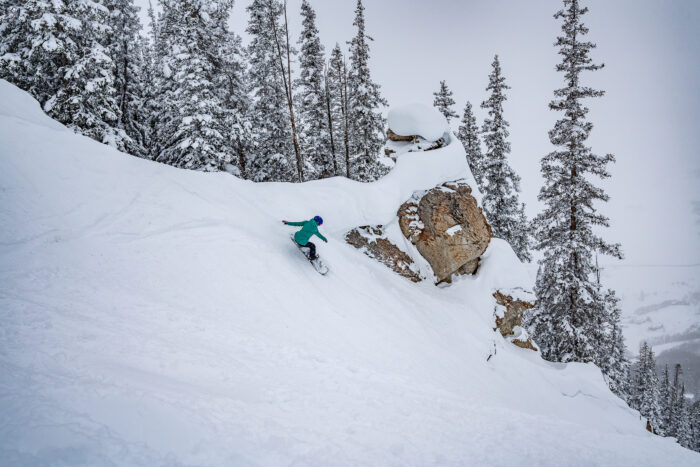
Stranda Women’s Descender Snowboard Review
Honestly, this board surprised me. With an unassuming aesthetic and a nascent presence among circles of female shredders, I wasn’t expecting the Stranda Women’s Descender Snowboard to be one of my favorites by the end of the season.
With 20 years of snowboarding under my feet, I often enjoy aggressive, stiff boards as well as select hybrid models but typically lean toward a narrower waist for nimbleness. Despite a slightly stouter shape and moderate waist, control wasn’t an issue with this board. Not close.
I rode the Women’s Descender Snowboard for a cumulative 2 weeks at the height of the winter season, when all the runs were open at Crested Butte Mountain Resort and Telluride Ski Resort including the farthest-reaching extremes and hike-to terrain: steep, cliffy, challenging riddles.
We had an unbelievable winter with ample deep days. Being at high altitude, the conditions also touched a broad mix of wind-punched hard pack, blue ice patches, corduroy, choppy tracks weaving trees, variable steeps, and sweeping powder bowls.
On the deepest powder days and through barren droughts, this board was steady through the steeps, groomers, moguls, trees, and even park jumps.
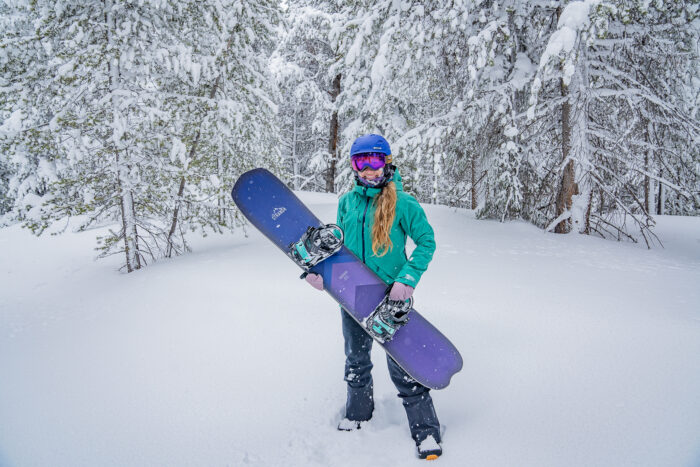
Stout Shape, Profile, Construction
The Descender’s core is constructed with a lightweight, snap-happy core made of paulownia. From tip to tail, the board features laminate stringers of poplar and slow-growing white ash, a hardwood that is more than twice as strong as poplar, which provides vibration damping.
Around the edge, the PU-sidewalls likewise help dissuade chatter, which we didn’t experience with the board, even racing straightaways down rough hardpack. Facing the sky, the top sheet is made of bamboo.
This board charges like it sounds: that directional shape carries energy forward and stability comes with the camber underfoot. That camber is parabolic, meaning it’s progressively reduced toward the tip and tail where the board is slightly upturned. Though the shape adjustment isn’t symmetrical, it’s more pronounced in the back. I could feel the slightly exaggerated lift behind my rear boot, which led to a greater load-and-spring up. Hello, pop!
A gradual sidecut radius and relatively blunt tail and nose also leads to a board that’s easy to maneuver yet anything but weak. There wasn’t terrain I found where this board’s core construction, directional shape, and camber-to-itty-rocker profile didn’t feel totally reliable. The Descender was just plain fun.
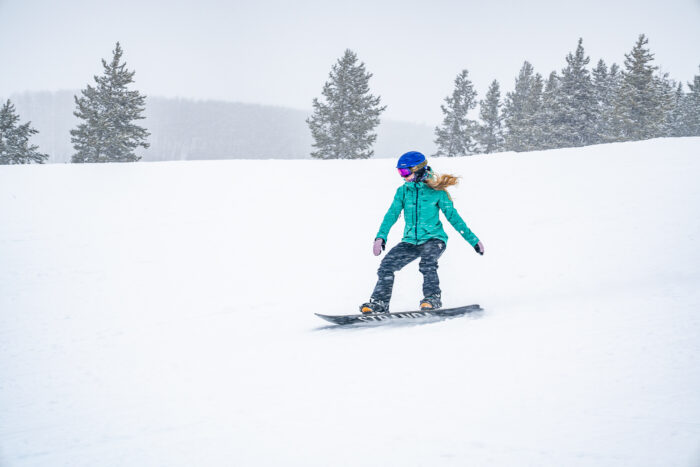
Unbeatable Edge Hold
I still remember the first time I rode at Crested Butte Mountain Resort, in 2011, and my pal said it wasn’t the friendliest for snowboarders — but that it’ll make you a strong splitboarder! The runs are spread below the butte, so you often find yourself traversing parallel below the main peak or on long exits or entrances to and from extreme terrain.
Regardless of how choppy, deep, or scrappy the traverses were at times in the extremes, I was stunned at how well the Descender traversed. This all-mountain snowboard sliced across slopes, and momentum didn’t seem to wane nor did I lose elevation. My speed carried while cutting vertical 40-degree slopes, and the ride remained parallel when needed. Honestly, if there’s a mascot board for CBMR, it might be this one.
The tenacious grip is due to the package of strength and energy — thanks to the overall stability of the core construction and silhouette of the profile — but also a major nod toward the extra contact points that are inserted along the board’s edge, dubbed the “Power Bumps.” In total, four slight grooves are placed along both the toe and heel edge, creating eight total spots where the edges have a more inflated connection with the snow.
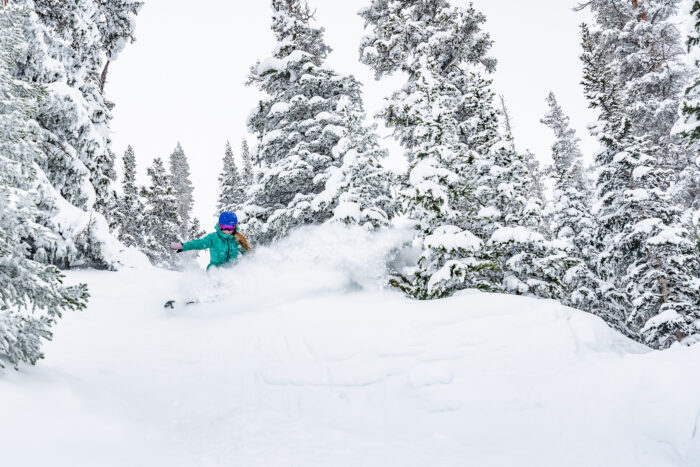
Favors Quick Turns
Maneuverability is certainly a queen’s-crown for this board.
Moguls aren’t obstacles I shy away from — I enjoy the meditative groove and find them to be quite entertaining. The Descender agreed. This board is so easy to control through tight turns around small or giant mounds. On the outside of the drop, there wasn’t springy or rigid playback — the flex and return energy was just right.
Likewise, this board is a whipper through tight, technical trees, as it smoothly, nimbly transitions edge to edge. I loved taking this board through dense growth on deep or tracked-out days.
Overall, the turn initiation was effortless, without being catchy and too aggressive, which I appreciated while carving wide-open runs.
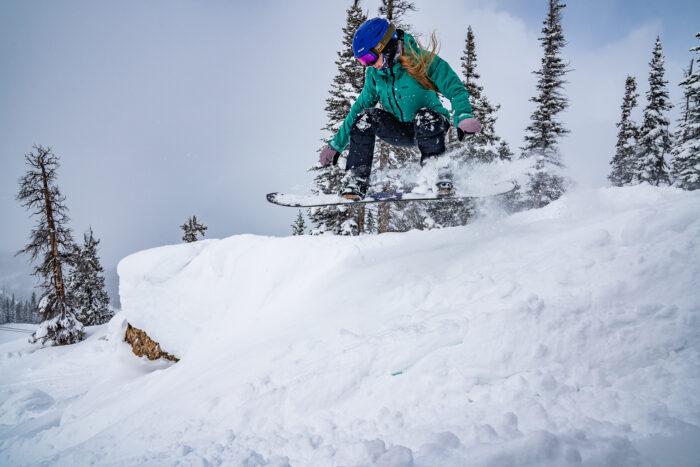
Playful Pop, No Chatter
Despite that the design is tailored toward groomers and freeride terrain, I also found the design to be a nice asset cruising through the park’s jump lines. Namely, the board is fairly poppy, especially in the tail behind the back foot, making it easy to ollie! After taking it through the beginner and intermediate jump lines in Telluride, I realized how fun the design is for hardpack tabletops due to the stability plus the absence of catchy edges.
Regardless of the playful quality, the board doesn’t reverberate energy while tearing through choppy, inconsistent snow. The right amount of damping is delivered. I also didn’t experience chatter with this board, which is a highlight given how variable snow can be at the resort.
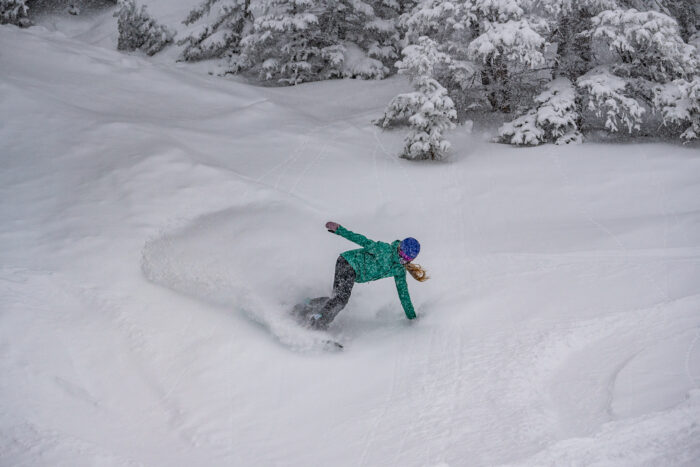
Stranda Women’s Descender Snowboard: Drawbacks
While bringing the sensation of wave surfing to snow is certainly a part of this board’s DNA, I found that the shape and sidecut radius didn’t particularly excel at huge, sweeping carves. Rather, I felt like the board performed most well with shorter and moderate arches painted across slopes — which are still a surf-like blast!
Though the board chomped extremely well on traverses, the edge hold didn’t excel on extremely icy, steep slopes.
Lastly, the directional shape is prime as is, which made the board limiting when I needed to ride switch in tricky, steep terrain without losing elevation. For me, the pros mostly outweigh the cons when it comes to that issue, but it is a drawback worth mentioning (and planning ahead for).
While the board floats fairly well and remains stable in powder, it’s not a rooster-tail powder board, so you can plan to set your snowboard bindings back if energy savings are needed.


Stranda Women’s Descender Snowboard: Conclusion
After experiencing challenging and deep laps with the Descender, I only wanted to keep strapping it to my feet. Overall, this board is fairly light, offers a 7/10 stiffness with a jovial pop in the tail, and the edge tune isn’t too sharp or aggressive.
While the sidecut radius isn’t the most prolific on this board — favoring moderate to hugged turns versus mega sweeping arches — and the directional shape makes riding switch second tier, this snowboard is one of the most fun, dependable all-mountain sticks to add to a quiver.
The Stranda Women’s Descender is an excellent all-mountain board, ideal for riders wanting to explore and be playful in a wide variety of terrain.
